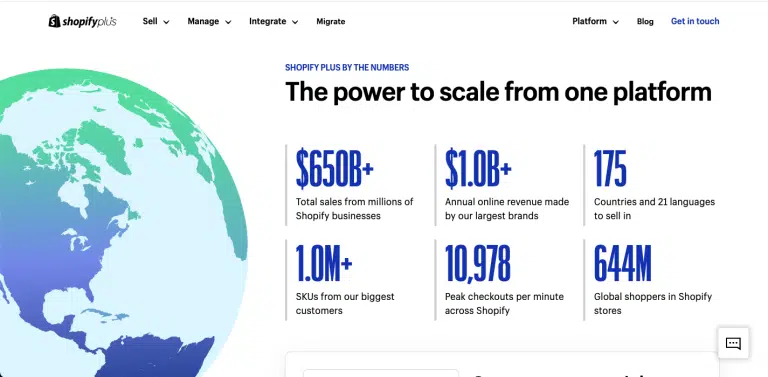The world of e-commerce is in a perpetual state of transformation. With technological advancements and shifting consumer expectations, businesses need to keep their fingers on the pulse of the industry. Staying ahead in this fiercely competitive arena requires embracing the latest trends, which significantly affect both businesses and customer experiences. In this article, we’ll delve into the key trends that are shaping the future of e-commerce.
AI-Powered Shopping Experiences: Elevating E-Commerce

AI-Driven Shopping Assistants: Your 24/7 Sales Companion
Imagine having a tireless sales companion that assists customers with real-time information, personalized experiences, and instant solutions. AI-driven shopping assistants do exactly that. They’re more than just chatbots; they are intelligent algorithms that understand customer behavior and preferences.
- Data-Driven Personalization: One of AI’s most remarkable features is personalization. As you browse through an e-commerce store, a silent AI engine is at work, analyzing your behavior and preferences. This translates into personalized product recommendations specifically designed for you.
- Human-Like Conversations: AI-driven chatbots can engage in conversations with customers that are almost indistinguishable from interactions with a human customer support representative. The ability to understand and respond to user queries, provide product details, and offer assistance around the clock is a game-changer.
Personalized Product Recommendations and Chatbots
AI has a particular knack for personalization. It’s like having your very own personal shopper, guiding you through the digital aisles and presenting options tailored just for you. And how does it do that? Let’s explore.
- Tailoring Choices for You: One of AI’s most significant contributions is personalization. As you explore an e-commerce store, AI algorithms silently observe your behavior, gaining insights into your preferences and tastes. This leads to tailored product recommendations, each curated to align perfectly with your desires.
- Driving Customer Engagement: AI-driven chatbots not only provide assistance but also actively engage customers. Through intelligent responses and proactive conversations, they keep shoppers interested and involved. They can even recommend products based on the customer’s browsing history or current shopping cart, a surefire way to boost sales and revenue.
Real-World Examples of AI Benefits in E-Commerce
We’ve explored the concept; now let’s ground it in reality. These are not just theoretical possibilities; AI is making a substantial impact on e-commerce. Here are some real-world examples of companies harnessing the power of AI:
Amazon's Product Recommendations
The online retail giant Amazon is a prime example of AI’s transformative influence on e-commerce. Amazon’s recommendation engine analyzes your browsing and shopping history, comparing it to data from millions of other customers to suggest products tailored precisely to your tastes.
eBay's Chatbot for Personalized Shopping
eBay’s ShopBot is another illustration of AI in action. This chatbot employs AI to assist customers in finding products they desire. It engages customers in a conversational manner, asking questions about what they are looking for and refining the search based on their answers, ultimately leading to personalized product recommendations.
Alibaba's Image Recognition Shopping
The global giant Alibaba’s Taobao app utilizes AI-powered image recognition technology. Users can upload pictures of items they’re interested in, and the app matches them to products available for purchase. It’s as convenient as taking a photo, making the shopping process far more engaging.
These examples demonstrate that AI is a driving force in the e-commerce industry. It’s boosting sales, enhancing customer engagement, and delivering personalized shopping experiences. Businesses that embrace AI are better positioned to cater to their customers’ needs and build long-term loyalty.
Augmented Reality (AR): Redefining the E-Commerce Shopping Experience
Augmented Reality (AR) is not just another technological buzzword; it’s transforming how customers experience online shopping. This ground breaking technology offers a dynamic and immersive way to engage with products and make informed buying decisions.
Traditional online shopping can sometimes feel like a leap of faith. You select an item based on images and descriptions, hoping it will look as good in reality as it does on your screen. Augmented Reality is rewriting this scenario, particularly in the realms of fashion and jewellery.
The Power of Virtual Try-Ons
With AR, customers can virtually try on clothing, accessories, and jewelry in the comfort of their homes. They no longer need to imagine how that necklace would look around their neck or how those sunglasses might complement their style; they can see it in real-time.
Immersive Product Exploration
AR apps and features offer immersive product exploration. Customers can view products from different angles, inspect intricate details, and even observe how they interact with their surroundings. This elevated experience adds a new layer of trust and satisfaction to e-commerce.
Real-World Examples of AR in E-Commerce
To truly grasp the potential of AR in e-commerce, let’s explore some real-world examples:
Warby Parker's Virtual Try-On
Warby Parker, a renowned eyewear brand, allows customers to try on glasses through their mobile app. By simply selecting a pair of glasses, the app activates the camera, and users can see how the glasses fit their face. It’s a game-changer for those looking for the perfect frames without visiting a store.
Sephora's AR for Beauty
Sephora, a leading beauty retailer, utilizes AR to enable customers to try on makeup virtually. Through the Sephora Virtual Artist feature, users can apply different products, shades, and looks to their own uploaded images or through a live camera view.
IKEA's Augmented Furniture
Furniture giant IKEA’s app lets customers visualize how products will look and fit in their homes. You can place furniture in your living space through your smartphone’s camera, ensuring the perfect match for your interior.
These examples highlight the incredible potential of AR in e-commerce. It goes beyond virtual window shopping; it’s about bridging the gap between the digital and physical worlds, giving customers a richer, more informed shopping experience.
Omnichannel Retailing
In the modern e-commerce landscape, omnichannel retailing stands as a pivotal strategy. It’s the practice of creating a unified and integrated shopping experience for customers across a range of platforms, be it online or offline. This approach acknowledges that customers may interact with a brand through diverse channels, from e-commerce websites and mobile apps to social media platforms and brick-and-mortar stores. The core principle of omnichannel retailing is to provide customers with a consistent and seamless experience no matter how they engage with your brand.
The impact of omnichannel retailing on e-commerce is profound. It goes beyond merely having a presence on various channels; it’s about offering an enhanced customer journey. Here’s how it influences e-commerce:
- Elevated Customer Experience: In a world where customers interact with brands across multiple touchpoints, offering a consistent and integrated experience is crucial. Omnichannel retailing ensures that customers can switch between platforms without encountering disruptions or inconsistencies. This not only builds trust but also keeps customers engaged and satisfied.
- Boosted Sales and Conversions: Omnichannel strategies are known to improve sales. By allowing customers to seamlessly transition from one platform to another (e.g., from a mobile app to a website or even a physical store), it reduces friction in the buying process. This often leads to higher sales and lower cart abandonment rates.
- Data Utilization: Omnichannel retailing enables e-commerce businesses to gather and utilize data from various sources. This data is invaluable for understanding customer behaviors, preferences, and purchasing patterns. The insights drawn from omnichannel data can inform marketing strategies, product development, and service enhancements.
- Adaptation to Trends: E-commerce is a dynamic space, constantly evolving with new platforms and technologies. An omnichannel approach allows businesses to stay agile and meet customers where they are, whether it’s on emerging social media platforms, new apps, or evolving markets.
Voice Commerce and Conversational Shopping
Voice commerce, or v-commerce, represents the latest advancement in e-commerce. It leverages voice recognition technology to enable users to search, browse, and purchase products or services using voice commands. The impact of voice commerce extends far beyond just convenience; it is about making shopping more accessible and interactive for a global audience.

The ascent of voice commerce is closely entwined with the widespread adoption of voice-activated digital assistants. Household names like Amazon’s Alexa, Google Assistant, and Apple’s Siri have become integral parts of our lives, revolutionizing the way we interact with technology.
However, the importance of voice commerce doesn’t stop at convenience. It brings unique advantages, especially when considering local languages and diverse populations. The ease and immediacy of voice commands break down language barriers and transform the shopping experience, providing significant benefits to both customers and businesses.
By embracing voice commerce, e-commerce businesses can cater to a more diverse, multi-lingual audience, creating an inclusive and accessible shopping environment that resonates with customers around the world.
Zero-Click Purchases and Frictionless Buying
In today’s fast-paced world, convenience is a key driver of consumer behaviour. Shoppers seek minimal effort when making purchases, and zero-click buying satisfies this desire. By reducing friction in the purchasing process, e-commerce businesses enhance the customer experience.
Zero-click purchases are a ground breaking development in e-commerce that focuses on eliminating the need for traditional shopping cart and checkout processes. Instead, customers can make purchases with a single click or even no clicks at all. This innovative concept has emerged to make the buying experience faster, simpler, and more intuitive.
Conclusion
The e-commerce landscape is a dynamic realm where adaptation is the linchpin to survival and triumph. In our journey through the future-defining trends of e-commerce, we’ve unearthed the transformative potential of technological advancements.
Artificial Intelligence (AI) has transitioned from a mere buzzword into a critical tool for e-commerce. AI-driven shopping assistants and personalized product recommendations provide customers with unprecedented levels of personalization and engagement, exemplified by industry giants like Amazon, eBay, and Alibaba.
Augmented Reality (AR) is demolishing the barriers between online and real-world shopping, fundamentally altering the e-commerce experience, particularly in the fashion and jewelry sectors. Pioneering brands such as Warby Parker, Sephora, and IKEA have demonstrated the immersive power of AR. Omnichannel retailing is elevating customer satisfaction and driving sales through consistent experiences across diverse platforms. Voice commerce is revolutionizing shopping accessibility, particularly in local languages. Zero-click purchases streamline the buying process. Embracing these trends is the key to e-commerce success in a rapidly evolving industry, offering the modern shopper convenience, personalization, and accessibility.












